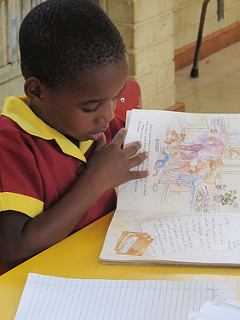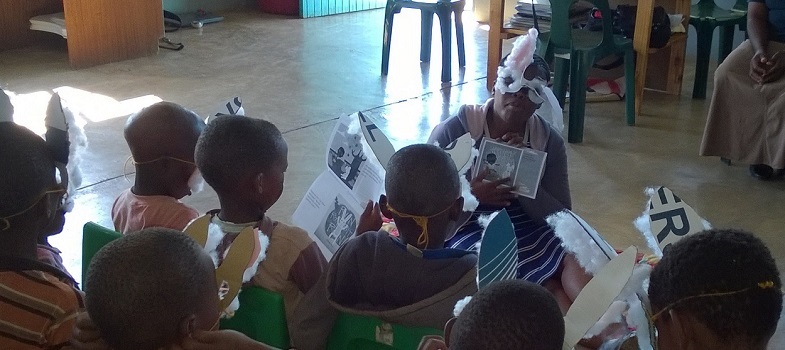Our approach to learning and teaching early reading

The approach we have taken on this course to learning and teaching reading is a balanced one. This means that we believe that being able to read involves:
- understanding that print carries meaning
- knowledge of letters and sounds to recognise letters and words
- comprehension of what’s been read.
This requires:
- children who are motivated to read
- children who are able to make connections between what they have read, their own lives and other texts they have read/listened to
- teachers who have a range of different approaches and methods to help children to master different aspects of reading.
Research has shown us that there are two equally important strategies in learning to read:
- ‘bottom-up’ skills where children use their knowledge of letters and sounds to read or decode whole words (but without necessarily understanding what the words mean)
- ‘top-down’ strategies where children use their personal and cultural knowledge, their prior reading knowledge, and the overall meaning of the text they are reading, to predict words and sentences.
Some children respond well to one approach more than the other; however, all children benefit from a combination of the two, which is known as a ‘balanced’ approach.
Some activities we will introduce may at first seem unrelated to reading and writing, but they are important aspects of cognitive development for literacy. Neuroscience shows how cognition – or thinking – involves a person’s physical, emotional and environmental states, multi-sensory experience, and imagination all at the same time (Gimenez et al., 2014).
Activities that develop basic concepts about position and shape, or that build motivation, are important processes that are essential for literacy. Research shows that children who do not acquire these skills in the early stages of becoming literate are likely to struggle to progress (Boursalou, 2008). In order to develop successfully, children need opportunities to develop their fine motor coordination and balance through activities such as painting, drawing, working with clay, throwing and catching, or skipping with a rope.
Also, activities that develop basic concepts about position and shape, or that build motivation, are important processes that are essential for literacyearly reading development.
Activity 1.4: Reflecting on learning strategies
Write brief notes on these questions and discuss them with a colleague:
- Think about two children who you have taught to read. What worked best for them – a ‘bottom-up’ or a ‘top-down’ approach?
- Why did one approach or the other seem to work best for the particular child?
- In your classroom, do you spend more time on one approach or the other in your own teaching? What are your reasons for this?
- Outside of reading lessons, are there other subjects where you use ‘top-down’ or ‘bottom-up’ approaches?
- Think about one of the ideas introduced in this section and apply it to a child you know. What type of reader are they? Who do you think helped them to read?
Discussion
All children learn to read in different ways. You may have found that some children find it easy to read or decode individual words, while others need the context of the word within the sentence to fully understand the meaning.
The implication of a balanced view of reading is that reading activities should not be confined to particular lessons, and that teachers should use a variety of approaches. Numeracy, life skills, creative arts and physical education all provide opportunities to support reading.
In the rest of this course you will consider:
- how to create a literacy learning environment
- what teachers can do to help prepare children to learn to read (pre-reading activities)
- specific methods for teaching reading
- how to make best use of stories and books
- how to assess reading and plan how to move children forward.
Each section of the course is underpinned by a balanced approach to teaching early literacy and the belief that children need to be actively engaged in the learning process.
How do children learn to read?



